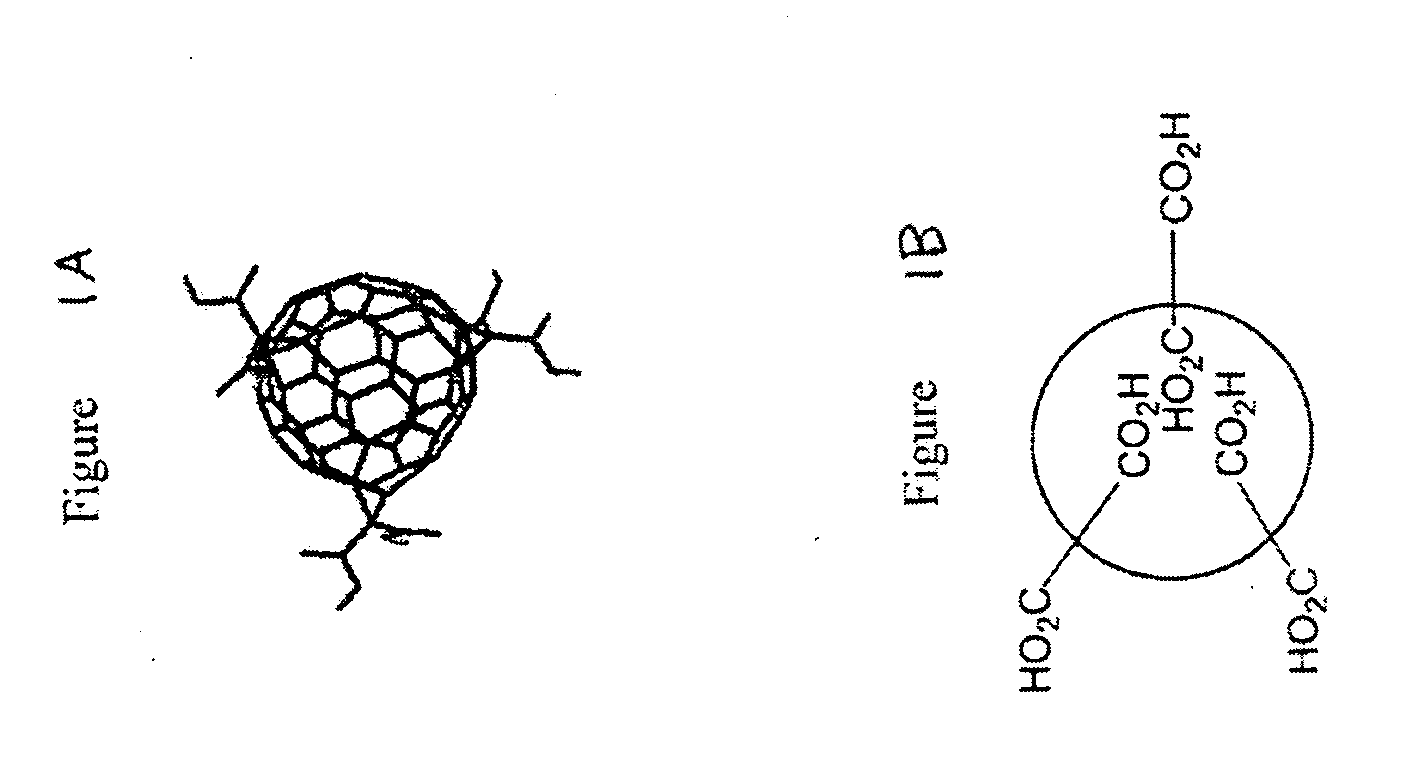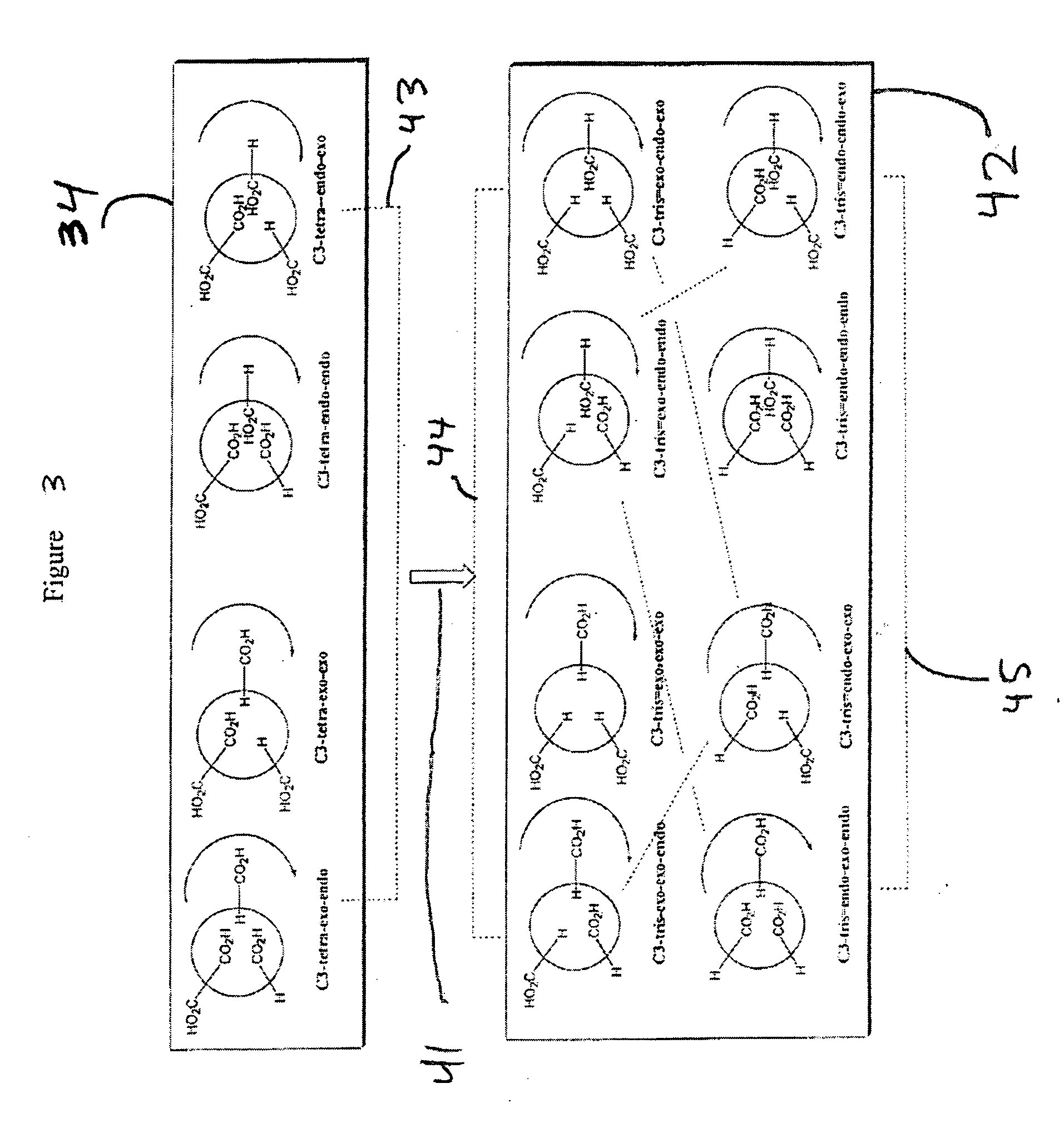Substituted fullerene compositions and their use as antioxidants
a technology of antioxidants and compositions, applied in the field of substitution of fullerenes, can solve the problems that native fullerenes are generally only soluble in apolar organic solvents, and achieve the effects of reducing the risk of toxicity
- Summary
- Abstract
- Description
- Claims
- Application Information
AI Technical Summary
Benefits of technology
Problems solved by technology
Method used
Image
Examples
example 1
[0216] Superoxide radicals were generated by employing the xanthine / xanthine oxidase / cytochrome c system. The reaction was initiated by the addition of xanthine oxidase (7.5×10−3 units) to the incubation mixture and the reaction was followed in terms of the reduction of cytochrome c and the corresponding increase in the absorbance at 550 nm. The reduction of ferricytochrome c into ferrocytochrome c was determined using the molar absorption coefficients of 9 mmol−1 cm−1 and 27.7 mmol−1 cm−1, for the oxidized and reduced forms, respectively. All assays were performed at room temperature. The incubation mixture consisted of 50 mM potassium phosphate, 0.1 mM EDTA, 0.01 mM cytochrome c, and 0.05 mM xanthine, along with the indicated concentration of antioxidant. A total volume of 3 mL was used in each experiment.
[0217] Various substituted fullerenes, both those known in the art and those reported herein, were tested, as shown in FIG. 10. Trolox, a known non-fullerene antioxidant, was te...
PUM
 Login to View More
Login to View More Abstract
Description
Claims
Application Information
 Login to View More
Login to View More - R&D
- Intellectual Property
- Life Sciences
- Materials
- Tech Scout
- Unparalleled Data Quality
- Higher Quality Content
- 60% Fewer Hallucinations
Browse by: Latest US Patents, China's latest patents, Technical Efficacy Thesaurus, Application Domain, Technology Topic, Popular Technical Reports.
© 2025 PatSnap. All rights reserved.Legal|Privacy policy|Modern Slavery Act Transparency Statement|Sitemap|About US| Contact US: help@patsnap.com



